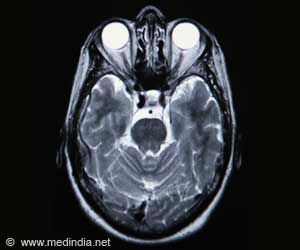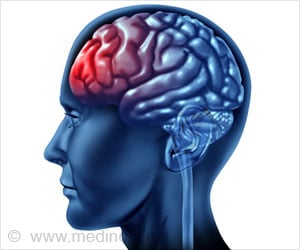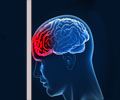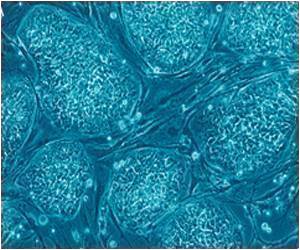New study can help understand how head and neck positioning affects concussion risk which can pave the way in developing better ways of preventing head injuries.

‘Better understanding of how head and neck positioning affects concussion risk can pave the way in developing better ways of preventing head injuries.’





It all comes down to how your head accelerates backward after impact, which some think is the major factor controlling concussion risk."We found it really interesting that your soft tissue - muscles, ligaments, and tendons - isn't doing much to dictate how your head is rotating immediately after an impact," said Michael Fanton, lead author on the paper and graduate student in the lab of David Camarillo, assistant professor of bioengineering. "Whereas even a few degrees of change in your head-neck angle can really alter how much your head is rotated and therefore, probably, your risk of concussion."
The researchers made their discovery in a model of the human head and neck but confirmed what they found in a similar model of a woodpecker, which can endure extreme accelerations when pecking holes. It turns out they too may be protected in part by the angle of their pecking.
A Big Surprise
In a previous study led by Calvin Kuo, who is a co-author on the new paper and graduated with his Ph.D. this spring, the group tied miniature weights to people's heads to tilt them backward. They then monitored how the head moved after participants either relaxed or tensed their necks. From this, the group constructed a simple computer model that recreated the way the head tilts forward and backward.
Advertisement
"Originally, we thought your neck muscles could affect head acceleration, and we wanted to figure out if that offered another strategy for reducing brain injury," Fanton said. "It was surprising that in these shorter-duration impacts, the neck muscles are not doing a whole lot."
Advertisement
The researchers were also curious whether head and neck positioning could alter front-to-back acceleration after a hard, fast hit. They ran their simulations with the head positioned at a wide variety of angles and found that small variations in position could mean the difference between high and low concussion risk. Their results showed that both the angle of the head and where it is hit affect the subsequent rotation of the head.
All this raised the question of how woodpeckers are able to withstand so much pounding - thought to produce head-on accelerations 10 times greater than those that cause severe concussions in athletes. So, the researchers created a simplified head and neck model of a woodpecker and ran it through the same positioning tests they had run in the human simulations. What they found is that small changes in position could substantially change the head acceleration the bird experienced. When the researchers aligned their model in the way real woodpeckers hold themselves as they peck, they noticed very low rotational acceleration.
However, the group cautioned that position alone likely doesn't explain the woodpecker's ability to withstand these forces. Scientists have suggested the size of their brains and features of their beak may be mitigating factors.
Focusing on Prevention
Although the Camarillo lab and others in the field are finding that the neck muscles and ligaments might not prevent the kinds of head movement that lead to concussions, neck positioning is not a simple solution. Positions that could prevent concussions might make people more susceptible to other injuries, such as paralysis, and what protects one person could potentially raise the injury risk of another person involved in the same impact.
"Discovering how sensitive the head is to slight changes in positioning has implications on design of helmets and other protective equipment," Camarillo said. "For example, could the facemask in football be offering a lever arm that adds to the rotation of the head and therefore risk of concussion? Are downhill mountain bike helmets protecting the chin at the cost of the brain? We hope to use this model we have developed to determine better design geometry of helmets and potentially for input to coaching on how to brace for impact."
Ultimately, Camarillo is hoping this kind of modeling work can aid in developing better ways of preventing head injuries.
Source-Eurekalert









